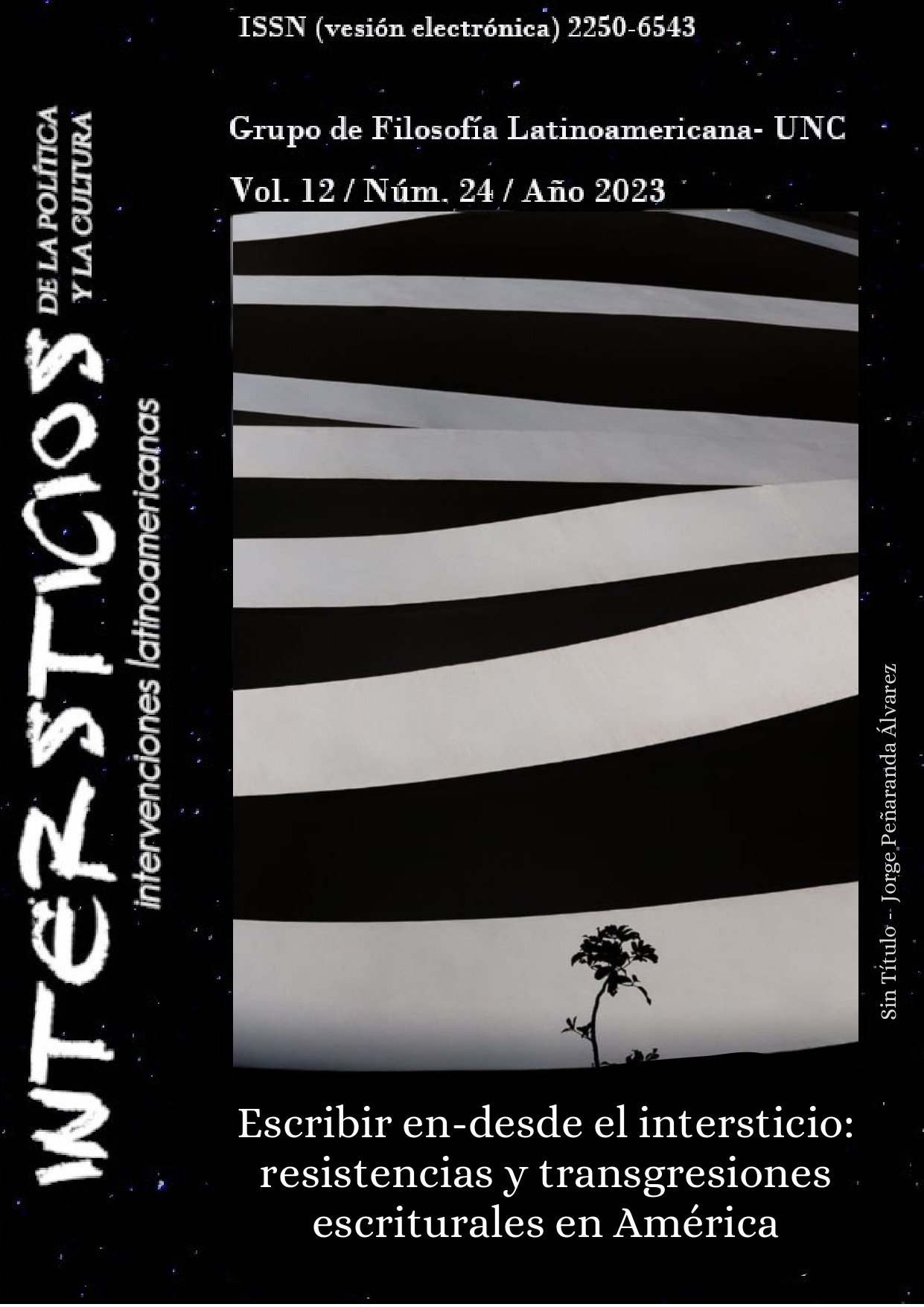Proposals in silence. An analysis of The Chaco War: My visit to the trenches and ditches of the veil (1935) by Laura Graciela de la Rosa Torres
Keywords:
Chaco War, essay, chronicle, women, subjectivityAbstract
Little has been written or represented in art about the work of women during the Chaco War. Although there are publications in the press written by women and some research carried out from the 1990s, there are few investigations that focus on particular and notable figures of this era.
This work is focused on the literary and philanthropic work of Laura Graciela de la Rosa Torres. Laura de la Rosa was known for being the director of the magazine Feminiflor (1921-1923), however, after the magazine closed, she founded the Liga Filial de Oruro, which was one of the main philanthropic organizations during the war. With this organization, De la Rosa visited the trenches and later wrote La Guerra del Chaco. Mi visita a las trincheras y zanjas del velo (The Chaco War. My visit to the trenches and ditches of the veil) in 1935.
This paper intends to analyze Laura de la Rosa's book as a text that innovates in the literary form, because it is a hybrid text between the chronicle and essay genres. At the same time, the book will be analyzed as a text with new perspectives for the time, where there is an observation on the condition of the wounded, a solidarity approach with the Paraguayan prisoners, and, at the same time, new proposals and demands for the well-being of the soldiers. De la Rosa tells her own experience from a female perspective, from subjectivity and empathy. At the same time, the author generates innovative proposals that had not been taken into account, as well as makes visible the functions that women performed throughout the conflict.
Downloads
References
Aliaga Bruch, Sandra. (1987). Éramos audaces. Testimonio de la directora Laura G. de la Rosa Torres. Beltrán, Luis Ramiro (comp.). Feminiflor. Un hito en el periodismo femenino de Bolivia (71-81). La Paz: CIDEM.
Angulo Egea, María. (2010). Voces femeninas en el periodismo literario: ironía, honestidad y transgresión. Rodríguez Rodríguez, Jorge M. y María Angulo Egea (coords.). Periodismo literario. Naturaleza, antecedentes, paradigmas y perspectivas (159-173). Madrid: Fragua.
Cazorla Murillo, Maurice. (2019). La vida meteórica de Germinal, el semanario orureño de 1920. Historias de Oruro (44), 29-32.
De la Rosa Torres, Laura. (1935). La Guerra del Chaco: Mi visita a las trincheras y a la zanja del velo. La Paz: s/d.
De la Rosa Torres, Laura. (1922, mayo). Cosas del oficio. Feminiflor, año I (12), 32.
De la Rosa Torres, Laura. (1922, marzo). De mi pequeño diario. Feminiflor, año I (11), 4-6.
De la Rosa Torres, Laura. (1920, 24 de octubre). ¡Germinal! Germinal, año I (1), 4.
Durán Jordán, Florencia y Ana María Seoane Flores. (1997). El complejo mundo de la mujer durante la Guerra del Chaco. La Paz: Ministerio de Desarrollo Humano; Secretaría de Asuntos Étnicos, de Género y Generacionales; Subsecretaría de Asuntos de Género.
La Gaceta de Bolivia. (1935, 9 de marzo). La Liga Filial de Oruro. La Gaceta de Bolivia.
La Patria. (1977, 1 de julio). Laura de la Rosa señala la importancia del periodismo. La Patria.
La Patria. (1977, 5 de junio). Un homenaje bien merecido. La Patria.
La Semana Gráfica. (1934, 10 de febrero). La Liga Filial y sus actividades. Un reportaje a Laura de la Rosa. La Semana Gráfica.
Molina Ergueta, Mary Carmen y Fernanda Verdesoto Ardaya. (2021). Mapeo de las mujeres en las artes en Bolivia (1919-2019). La Paz: Goethe Institut; Coordinadora de la mujer.
Weinberg, Liliana. (2007). Pensar el ensayo. Ciudad de México: Siglo XX Editores.
Downloads
Published
Issue
Section
License

This work is licensed under a Creative Commons Attribution-NonCommercial-ShareAlike 4.0 International License.
Authors who have publications with this journal agree to the following terms:
a. Authors will retain their copyright and grant the journal the right of first publication of their work, which will simultaneously be subject to the Creative Commons Attribution License that allows third parties to share the work as long as its author and first publication in this journal are indicated.
b. Authors may adopt other non-exclusive license agreements for distribution of the published version of the work (e.g., deposit it in an institutional telematic archive or publish it in a monographic volume) as long as the initial publication in this journal is indicated.
c. Authors are allowed and encouraged to disseminate their work through the Internet (e.g., in institutional telematic archives or on their web page) after the publication process, which may produce interesting exchanges and increase citations of the published work (see The effect of open access).


